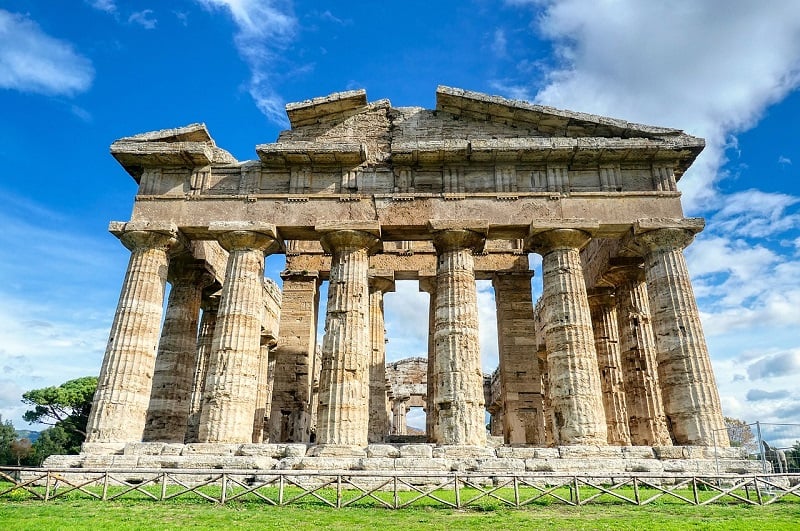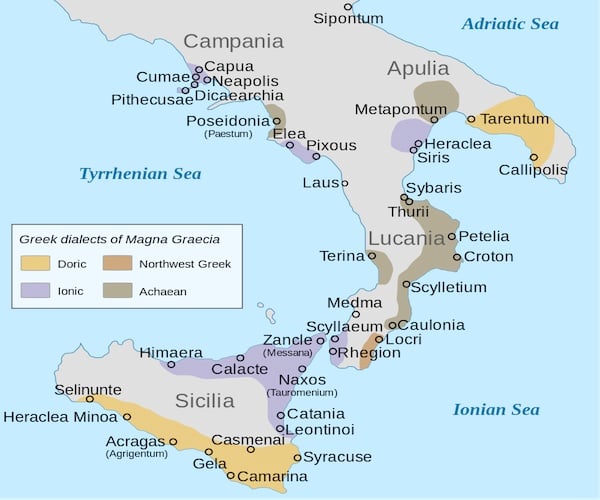
A recent DNA study by an international team of scientists showed when Ancient Greeks colonized Magna Graecia in Italy.
Magna Graecia is the name of the coastal areas of southern Italy and Sicily that were extensively populated by Greek settlers.
The settlers brought with them their Hellenic civilization, which was to leave a lasting imprint in Italy, such as in the culture of ancient Rome.
While the cultural contribution of these Greeks to southern Italy is clear, researchers have argued for years about their biological contribution.

A study in the European Journal of Human Genetics claimed that they were able to determine when and how Italy and Sicily were colonized by Greeks, through DNA analysis.
“There are scenarios ranging from a colonization process based on small groups of males moderately mixing with indigenous groups to substantial migrations from Greece and a Hellenic origin for a significant part of the pre-Roman Italian population,” noted lead author Sergio Tofanelli and his colleagues.
Comparing DNA of people in Italy with samples retrieved from Greeks
The team picked up DNA samples from people who live in southern Italy and Sicily and compared it to samples retrieved from Greeks in Euboea and Corinth, where archaeologists believe the first wave of colonizers came from.
When the researchers analyzed the Y chromosome data and modeled the typical mutation rate over the centuries, they “recovered a signature of the Greek Contribution to Sicily during the Archaic Period” or between the 8th and 5th centuries BC.
More specifically, this wave of colonists likely arrived in East Sicily first and then dispersed into West Sicily and South Italy.
“Despite the multiple alternative explanations for historical gene flow,” they write, “it is relevant to stress here that a signature specifically related to the Euboea island in East Sicily was consistently found at different levels of analysis, in line with the historical and archaeological evidence, attesting to an extended and numerically important Greek presence in this region.”
Historians and demographers have also debated just how large the migration population was when they arrived in Magna Graecia.
Walter Scheidel, professor of classics and ancient history at Stanford University, has estimated from a demographic perspective that the founding population was likely around 20,000 to 60,000 males.
But if the researchers’ supposition that East Sicily was colonized first is correct, this “points to the lower end of the size spectrum proposed by historical demographers, with values in the order of thousands [of] breeding men and [a] few hundred breeding women,” they write.
“A settler population of 5,000 males, mating with local women, would have had to grow by more than 1% per year for several centuries,” Scheidel says in response to Tofanelli and colleagues’ conclusions, according to Forbes.
This is substantial and out of character for the ancient world, particularly considering the ancient Greeks were not polygamous.
“Maybe growth rates were higher than we think,” Scheidel suggests, “but their settler numbers seem very small. This would translate to just a few dozen ships full of Greeks, over a considerable period of time, which is problematic.
“It’s hard for me to see how a few thousand settlers could have produced the large Greek population we see in Sicily a few centuries later,” he told Forbes.
Related: Ancient Greek Helmet, Inscription Found Near Velia, Magna Graecia
See all the latest news from Greece and the world at Greekreporter.com. Contact our newsroom to report an update or send your story, photos and videos. Follow GR on Google News and subscribe here to our daily email!



